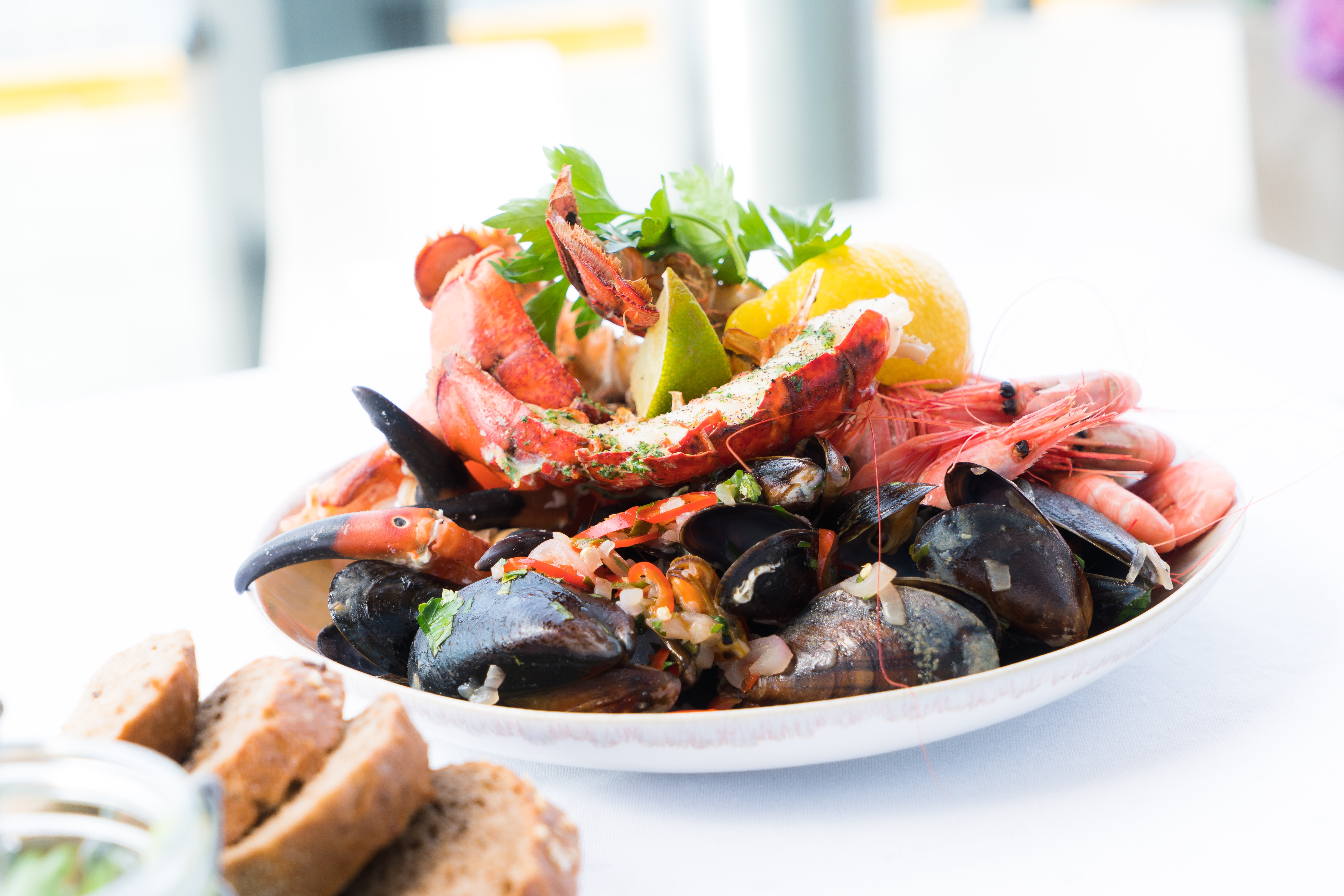When people think about fresh seafood, often a warm-weather setting comes to mind. And while we agree that grilled Mahi tacos, ceviche, and freshly shucked oysters all sound particularly delicious with the backdrop of a nice, sunny day or beach – seafood really is a delicious, nutritious and sustainable protein we should be eating year-round.

In fact, just last week, the United States Departments of Agriculture (USDA) and Health and Human Services (HHS) released the updated 2020-2025 Dietary Guidelines for Americans (DGA). The DGA are updated once every 5 years and serve as the basis for federal nutrition programs as well as expert advice given by doctors and dietitian-nutritionists nationwide.
The new guidelines recommend people of all ages, particularly young children and pregnant women, should eat seafood at least twice weekly. Additionally, the DGA recommends that babies and toddlers under two, can and should be introduced to seafood beginning around 6 months of age.
Eating seafood at least 2x a week can offer the following benefits:
-Seafood consumed regularly during pregnancy can help with brain development in babies.
-Seafood starting at around 6 months provides critical nutrients like iron and omega-3s that support brain development and immunity for babies and toddlers. Additionally, starting seafood early can also help shape lifelong taste preferences, as well as healthful food choices.
-For adults, seafood provides protein, calcium and vitamin D, which help strengthen bones and maintain muscle mass.
-Eating fish that’s rich in omega-3 fatty acids, appears to reduce the risk of heart disease, particularly sudden cardiac death.
However, there is a significant gap between the amount of seafood Americans currently eat and the new recommendations – 94% of children and 80% of adults currently do not eat seafood twice per week. The DGA stress that a wide range of health benefits are being left on the table because of low seafood consumption, and urge Americans to eat more. To make achieving this a little easier, we’ve developed a quick list of tips to get you started.
5 Tips For Making Eating Seafood Year-Round Easy
- Reference Seattle Fish Company’s Seafood Seasonability Chart while shopping (see below). This chart, combined with the recommendations of your grocery store’s seafood monger, will help you make decisions on purchasing seasonally fresh product.
- Ask your seafood monger for tips on choosing local or regional options. This allows you to make a more informed and sustainable seafood purchase. It could be from a nearby responsible aquaculture facility or a small fishery!
- Swap seafood in for the meat protein in recipes that are already part of your regular rotation. For example, replace chicken breast with a white fish like cod or halibut, and steak or pork with a “meatier” seafood choice like salmon or tuna.
- Stock your freezer. Seafood is very easy to freeze and quickly thaw, making it perfect for weeknight meals. Preportioned options found in the freezer aisles are a great option, or you could buy a fillet at the seafood counter and portion it yourself at home.
- Be open to exploration – with both species, and meal type. Seafood doesn’t have to just be a dinner thing. Try smoked salmon with breakfast or grilled fish on top of your lunchtime salad.


